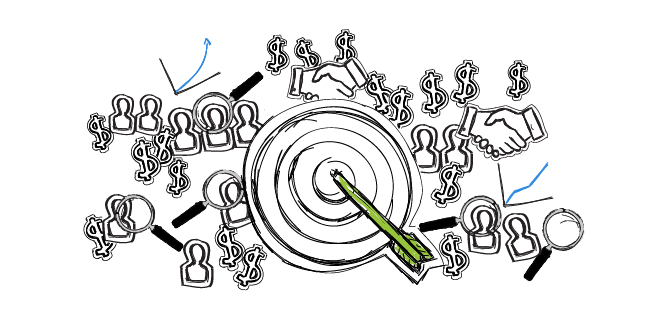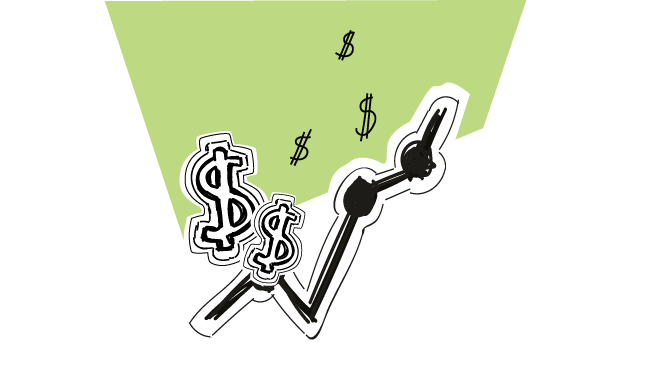“Your price is too high… I’d buy, if only you had feature X… We already use software for this…” – we all hear that sometimes while talking to our prospects. Check out the advice from Steli Efti of Close on how to handle 3 common sales objections: the pricing objection, the feature objection, and the change objection in your conversations with potential customers.
Now let’s give Steli the floor. 🙂

***
This is it. The moment you’ve been waiting for.
You’ve just wrapped up a product demo with a high-value prospect and it went perfectly. You were at the top of your game. The decision-makers were interested and engaged throughout the presentation. All that’s left is the close.
“So,” you say confidently, “Do we have a deal?”
And then you hear it. The objections.
- “Your product is too expensive.”
- “We’ll buy if you build these features.”
- “We already have a solution in place.”
Suddenly that sure-win deal isn’t so solid, and its success hinges on how you manage those objections.
It doesn’t matter how good a salesperson you are. Objections are a part of the process. You can’t avoid them, so start prepping for them. Because the difference between sales success and failure isn’t avoiding objections, it’s overcoming them.
Let’s start with scripted responses to three of the most common sales objections. Work these into your sales repertoire and you’ll be closing more deals and generating more revenue in no time.
The pricing objection
The pricing objection is the most common objection salespeople face and comes in a number of different forms. For example:
- “Your product is too expensive.”
- “We don’t have the budget for it this year.”
- “You’re more expensive than our current solution.”
Here’s the thing about the pricing objection: It’s rarely about the price.
In most cases, they can afford to buy your product. They just don’t want to. Either they feel they don’t need it, they’re trying to get a discount, or you haven’t demonstrated enough value to justify the price.
You can’t manage their objection successfully until you know what’s really going on, so do what good salespeople do best: Ask questions.
Here’s what that might look in practice.
Prospect: “Your product sounds great, but it’s outside our budget right now.”
You: “I understand budget concerns … I want to be sensitive to that. But I really feel like there’s something else going on. Am I crazy? Be honest with me: Do you love the product?”
Prospect: “You’ve got a great product. We’d love it, but we just can’t afford it right now.”
At this point, they’re insistent it’s about price. But don’t take their word for it. Press a little further to make sure.
You: “Alright, tell me this … At what price would you buy?”
Prospect: “Well … We could probably do $2,000.”
You: “Okay, so you’re saying that if I could offer our product for $2,000, we’d have a deal? You’d buy right here, right now?”
That last question creates a moment of truth; your prospect can only respond in one of two ways. Sometimes they’ll say “yes” and you’ll know their objection really is about price. But more often, they’ll say something like, “Well, then we’d have to take a look at …”
Either way, you’ve uncovered their real concerns and can respond accordingly.
The feature objection
The larger the accounts you pursue, the more likely you are to hear the feature objection. Enterprise businesses often use their size and revenue potential as a bargaining chip to get you to customize your product to meet their needs.
Here’s how the objection might sound.
- “We’ll buy if you add X, Y, and Z.”
- “We just need you to make one small change to your product.”
- “In exchange for the revenue we’ll generate, can you add these features?”
Some of the time, the features they want will be on your development roadmap. But more often, what they want isn’t in line with the future of your product.
You can’t completely revamp your product to please one prospect. That sets a demanding precedent for the relationship and risks upsetting your current customers.
Instead, be prepared to walk away. Draw a line in the sand and don’t cross it, even if it means losing a couple deals. That willingness to walk away is often what it takes to close these large accounts, anyway. Here’s how that might look in practice.
Prospect: “You’ve got a great product, but we really need these features before we can commit.”
You: “I understand why that’s important for your business, but that isn’t something we can provide at this time.”
Prospect: “Come on … It’s a small change and we’d bring in a lot of revenue for your business.”
You: “You’re right, you would. And the feature is a great idea. But it isn’t right for us, and it wouldn’t be fair to our current customers to compromise the integrity of our product. I understand if that means you need to take your business elsewhere. If we ever do add that feature, I’d be happy to reach out and let you know.”
Prospect: “You know what … It’s not that big a deal. We can live without it right now. Let’s make this deal happen. But keep it in mind for future updates, alright?”
Are they always going to come around when you stand your ground? No. You will lose accounts over this, but that’s okay. The goal of a salesperson shouldn’t be closing every deal, it should be closing the right deals.
The change objection
Some prospects will do anything to avoid change, including settling for a lesser product when something better is available. You’ll run into this a lot if you’re entering a crowded market.
Here’s how the objection might sound.
- “We already have a solution in place.”
- “Our current solution isn’t perfect, but it gets the job done.”
- “You’ve got a great product, but we don’t want to change tools.”
No product is perfect, so find out what needs their current solution leaves unaddressed and center your pitch around those.
Here’s how that might look.
Prospect: “Thanks, but we’ve already got a solution in place.”
You: “I understand that you’re using [competitor]. They’ve got a great product, but be honest with me: Are they really meeting all your needs? Or is there something your business is still struggling with?”
Prospect: “Getting our sales and marketing team on the same page has always been a bit of a problem.”
You: “So [competitor] does X, Y, and Z well, but you’re having trouble with team communication. Am I understanding you correctly?”
Prospect: “That’s right.”
You: “Okay, let’s talk about what that lack of communication is costing you …”
Now that you know where their struggles are, you can customize your pitch to meet their needs and match their values.
Often, that’s all it takes. But sometimes you’ll find a prospect who is especially stubborn. If they like your product but don’t want to abandon their current solution, propose a different option: Using both.
Here’s how that might look.
You: “Alright, so you like the communication capabilities of our product, but the power of scalability of [competition]. Right?”
Prospect: “That’s right.”
You: “What if you didn’t have to choose? What if you could have the best of both worlds?”
Prospect: “I already told you I don’t want to switch solutions.”
You: “I understand. But what if you used both our product and [competition]? That way you’d get the power and scalability you’re used to, along with enhanced communication we offer?”
Prospect: “Isn’t that going to be more expensive?”
You: “Sure, but we’ve got a couple customers running a dual-product solution like this, and they’ve said the productivity gains far outweigh the operating costs. Is that something you want to look into?”
We’ve used this strategy many times at Close when prospects couldn’t decide between our inside sales CRM and what Salesforce offers. It doesn’t always work, but it has a much higher success rate than arguing back and forth with a stubborn prospect.
The secret to successfully managing sales objections
Each of those objections had two things in common:
- A genuine desire to understand and resolve a prospect’s concerns, and
- A willingness to walk away if the relationship wasn’t right for either party
If you embody those two traits, it won’t matter what objection your prospects throw at you; you’ll be prepared to respond in a way that has everyone’s best interests in mind. And trust me, that’s often all it takes.
What about you? What objections do you hear most often, and how do you handle them? Share your experience in the comments below, then get back out there and crush it.
READ ALSO

What to Do When You See Negative Replies to Your Cold Emails?
Running your email outreach campaigns, you will definitely see some negative replies. You can be more than sure of that. It's not a question of if?, but when? how many? from whom? and are they angry or just not interested? And actually, those are all very important questions. It's not a good idea to ignore the fact that you see negative replies to your cold emails just because everyone gets some. Negative replies are a sign that there is still something to improve in your outreach strategy. Here's about a few types of negative replies, what conclusions you can draw from them, and how you can use those conclusions to improve your cold email campaigns.

6 Trends in Cold Email that Will Help You Get New Clients Abroad
We’re witnessing the renaissance of B2B cold emailing in outbound lead generation and sales. For the last several years cold calling 2.0, described in the famous Predictable Revenue by Aaron Ross, is becoming increasingly popular in the US and Western Europe. It appears, however, that the method requires more and more advanced tactics to be equally effective as it was only a few years ago.

Account Based Sales Development 101: What Is It? How Does It Work?
If you're doing outbound sales, you've probably heard about the ABSD (Account Based Sales Development) trend lately. Is it new? Is it for everyone? Is it a revolutionary approach that will bring you $$$ as soon as your sales team adopts it? What is it, really? Check out the short introduction to ABSD in simple words.
